by Guang Yang
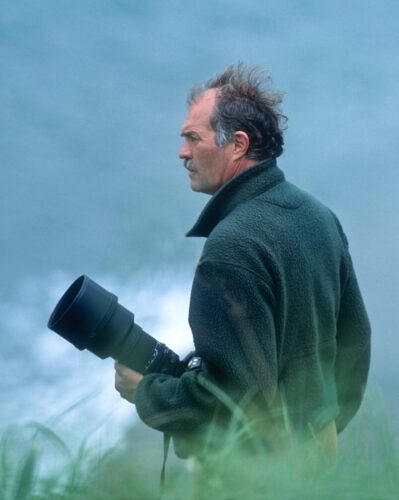 During the last four decades, wildlife photographer Tom Murphy has captured and presented to us many iconic images of nature from around the world. Yet, it is Yellowstone National Park that claims his heart.
During the last four decades, wildlife photographer Tom Murphy has captured and presented to us many iconic images of nature from around the world. Yet, it is Yellowstone National Park that claims his heart.
Back in the winter of 1985, Tom embarked on a solo skiing journey across the backcountry of Yellowstone National Park. He could not have picked a winter with more severe weather conditions. During the 14-day expedition, Tom had to overcome challenges beyond what he could have imagined, enduring a four day snowstorm during which he could not see anything beyond 100 yards, and sleeping on snow banks under a thin little nylon tarp when it was 25°F to 30°F below zero. The sole purpose of the trip was to explore that piece of land, and the creatures in its wilderness.

In February 2018, I joined a photography tour to Yellowstone National Park, with Tom being our guide and photography instructor. Knowing Tom’s vast body of work and his knowledge of the park, we were expecting him to start the workshop with photography tips. It turned out to be much more than that. From the very beginning, what Tom had shown and taught us is how one could connect to the mountains, the rivers, the forests, and the animals before becoming a real nature photographer.
“In the wild natural environment, wildlife has equal right to live as human beings. As a nature photographer, we should always respect nature.”
“Rather than photographers going out to create a story, pushing and twisting wildlife, we need to instead be quiet and watch and listen to what creatures and wild land have to tell us.”
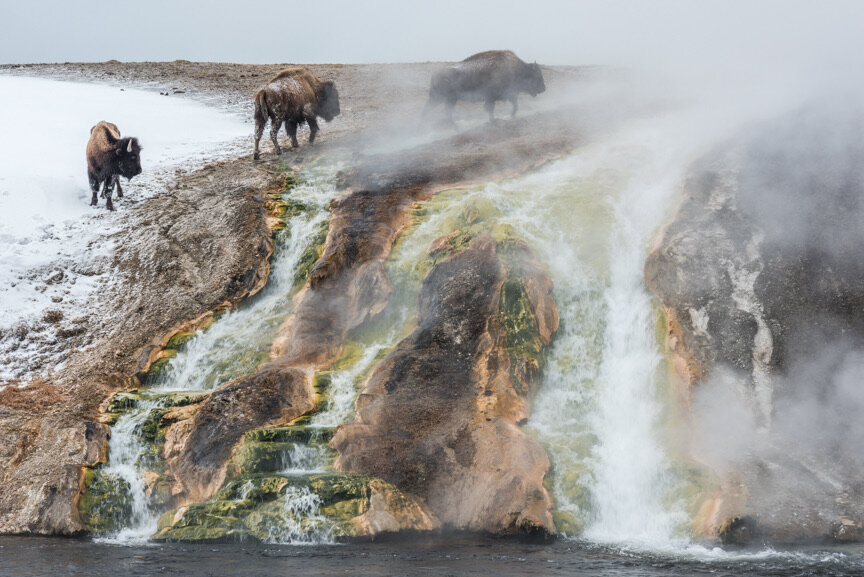
“Every time when walking or skiing into nature, I feel blessed to be a guest in wildlife’s home. Animals have no obligation to cooperate with human beings on their own homeland. While as a guest, I would try my best to be considerate when moving around or taking photos so to minimize the chance of interrupting their lives.”
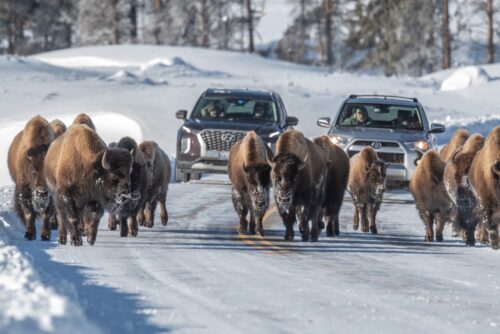
Bison is one of the symbols of Yellowstone. Yet it is not so widely known that, in winter, bisons are under great stress to survive. They often gravitate toward the steaming geyser basins to keep warm. When hungry, they would roam around, look for grass to graze on, often having to dig deep into the snow. And they need to move to different places every day, many times cross the roads built for automobiles. Too often, we see people get in front of bison and block their path. “When confronting bison moving in snow, sometimes toward a photographer/tourist, people should quickly get out of their way. Bison need to survive because they are out there every day, while we don’t need that one photo to survive.” Realizing tourists’ eagerness, Tom believes that “photographers and tourists could use telephoto lenses to remotely handle this type of encounter.” “Same thing happens when people encounter fox, coyote as well as other animals.”
Nowadays, more and more photographers/tourists go all the way to remote places like Yellowstone to observe and record wildlife. Many invest a big chunk of time, money, and passion into the trips, hoping to catch some magnificent moments or dramatic action of animals. People come with various purposes, from gaining a good experience, to publishing in a magazine, or entering photography contest and so on. Thus the “drama-driven” photography has become more and more popular.
So what’s considered a good photo? Of course “drama” always grabs the eyeball. Yet Tom believes that it would be a great shot if the drama arises from natural behaviors and reflects moments of natural progress! However, “if the drama is caused by photographers/tourists with the purpose of causing animals to react due to confusion, unease, or even panics, it should be considered very unethical. A ‘dramatic’ photo showing the panic of animals caused by human beings is not a good picture.”

In early 2020, Tom engaged in a program in which he was to study a family of 4 bald eagles, including both parents and two baby eagles. In a 4 months period, he spent roughly a total of 30 days, 6-7 hours each day, to monitor the family’s daily lives. He set himself up 50 meters away from the eagle’s home, watching and recording activities happening mainly in the 3-feet diameter nest, sometimes in snow storms. “I believe the eagles knew I was there. But they did not move away (how lucky I was) and still acted as if it’s without my distantly watching them.” Through this program, Tom was able to learn a lot about bald eagle behaviors, the kind of wisdom of life they have, and how they survive every day. And he was able to capture some wonderful moments of the eagle families.
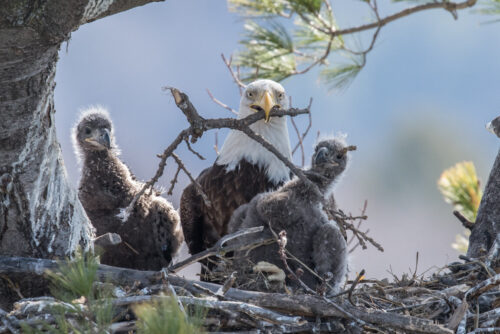
“I believe the eagles knew I was there. But they did not move away (how lucky I was) and still acted as if it’s without my distantly watching them.”
Sure, many photographers/tourists live far away and don’t have the luxury of time. Usually they only have a few days to a few weeks. Yet that should not be an excuse. We still need to start with respecting and learning the target subjects. It should be a continuous learning process as well.
“Think of the trip as a window to the world of wild nature. And it always takes time to accumulate knowledge, so be patient, and be humble. I’m still learning new things every time I go out to nature.”
“Stay away quietly from the subject and let everything else happen naturally.”
“It’s true that these moments are rare so one needs to be patient, and patient! Normally a 6-7 day trip should give photographers/tourists chances to witness and record some great moments. Once the moment is recorded, the photographer should be rewarded for sure.”
As a devoted photographer, sometimes one may find him/herself becoming a tourists’ attraction and causing traffic jams. One self-discipline at this moment is just to stop for a moment and take a deep breath rather than engaging a “venturous move” for the big shot. This pause could also signal to others what may be a disturbing action, so photographers need to set an example to others for good considerate behavior.

“During a visit to Hayden Valley several years ago, I was sitting on the shore quietly observing trumpeter swans swimming. I was so engaged and did not realize until later that there were 50 people jamming into the spot, yelling and clapping to each other as everyone got excited. I realized people might see me carrying some professional equipment which might lead to their judgement that ‘It must be something interesting out there’. I felt I caused a problem and decided to back up and left.”
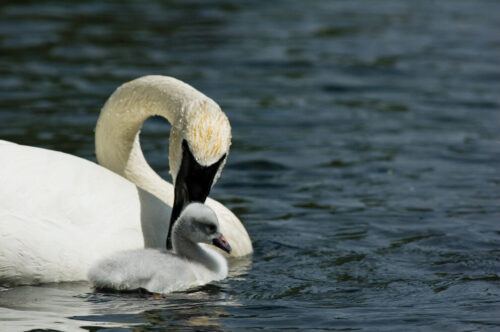
Tom is cognizant of the huge challenges of protecting nature. In addition to leading photography tours and giving lectures, Tom relentlessly uses his photography to illustrate his passion for the remaining wild places on our earth. And he believes in the power of photographs in changing our society and making it a better world.
You can view more of Tom Murphy’s images on his website at Tom Murphy Photography.
All images copyright ©Tom Murphy
